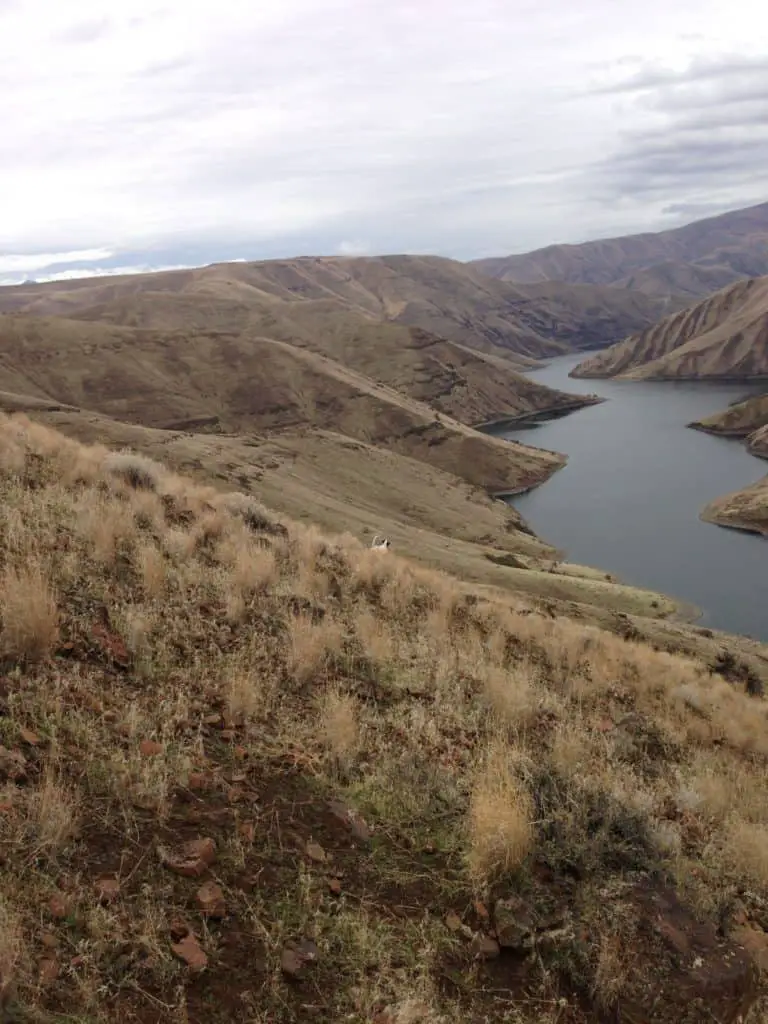
We’ve all been there before. Some days you feel like you own the best hunting dog in the world. You head out, and in a matter of hours, you’ve hunted down more hares/birds than you could handle. You get home just in time for dinner.
Other days are not so lucky. It’s as if your dog’s nose has gone haywire. You spend the whole day in the field, and your dog ends up with nothing. Sometimes the dog even passes right by a dead fox without so much as a sniff.
What Are the Best to Worst Scenting Conditions?
Did you ever wonder about the best and worst scenting conditions for your hunting dog? Is it all dependent on the dog?
No. It’s not always your dog’s fault.
Hunting dogs actually have superb olfactory capacities. Their snouts contain around 300 million smell receptors, while humans only have 6 million. What’s more, their brain’s olfactory area is about 40 times bigger than ours.
All in all, a dog’s sense of smell is 44 to 100 times stronger than the average human’s.
So, why is your hunting dog not living up to your expectations?
Because it’s not all about your hunting dog’s innate power of smell. Numerous factors come into play when we judge the optimal scenting conditions required for hunting.
Moisture, for example, greatly affects your dog’s tracking abilities. When a deer sheds off dead tissue, airborne moisture particles carry it around. They eventually end up in your dog’s nose, and that’s how the dog smells a deer’s characteristic scent.
Wind intensity is a major factor, too. It helps disperse these airborne scent particles, so there’s a higher chance they’ll reach your dog’s snout.
Seasonal vegetation, sunlight, and rain also play a role. There’s nothing like a cool fall day when the ground is soft and moist to go hunting. Rainy weather is all-right, as long as it’s not too heavy.
Windy winter days when the ground is frozen and covered in snow are the worst. So are the scorching summer months when the air is dry, and the grass is high and brittle.
Keep on reading to find out about different scenting conditions and how they affect your dog’s hunting abilities.
How Humidity Affects Scenting Conditions
This is one of the major factors to consider before you go out hunting. The more humid it is, the more water vapor there is in the atmosphere. This water vapor acts as a scent carrier.
That’s why the woods, for instance, are preferable to the desert. The desert’s simply too dry.
Similarly, the moisture you may find on tree trunks, and grass helps carry scent when it eventually evaporates. Hence hunting in the early morning right after a light dew is one of the best scenting conditions for your dog.
The same can be said of colder days when there’s melting frost on the ground.
You should also pay attention to the moisture of your dog’s nasal passages. The water in your dog’s nose helps transmit the scent to the olfactory nerves.
That’s why regularly watering your dog is a useful habit, especially on drier days.
How Wind Affects Scenting Conditions
Wind intensity and direction are also significant factors. The wind scatters scent across long distances. This helps scent reach areas of the field. It wouldn’t have reached otherwise.
On the other hand, strong gusty winds may spread scent too thin, causing it to be too faint for your dog to pick up.
As for wind direction, it’s heavily influenced by terrain and habitat features. These include cliffs, hills, and even trees.
It’s also impacted by convection currents. As air warms up, it becomes less dense and rises above. The opposite happens when the air cools up.
The best position for a hunting dog is downhill into the direction the wind is blowing. This helps dogs catch the scent of the game that is running upwind.
If the direction of the wind is shifting too often, your dog may get confused and lose track of the hunted animal.
In conclusion, a light breeze with a nearly constant direction is the optimal set-up for a successful day out hunting. Always remember to check out wind direction before you head out.
How Temperature Affects Scenting Conditions
Temperature is only a minor point in its own right. The trick with temperature, however, is that it creates numerous scenting conditions.
We’ve already seen how hot and cool air currents can affect wind direction. Temperature greatly impacts the terrain, too. In the summer, the cover becomes thicker and higher. This can drastically alter scent flow. In winter, the ground is covered with frost and dry snow replaces moist grass.
In addition, extreme temperatures may exhaust your dog physically and negatively affect his scenting abilities.
Overall, spring and fall are usually considered the top seasons for hunting. They offer a thinned out cover and moist grounds. Before 10 am and after 4 pm are the best times of day since they coincide with cooler weather.
How Rain Affects Scenting Conditions
Although high humidity is a great advantage for hunter dogs, too much of it can turn into a hindrance. Heavy rain quickly washes away scent particles. It also clogs up pathways and can make dirt roads impassable for both you and your dog.
Hunting right after a rainstorm has passed, however, can be a perk. The barometric pressure starts building and the scent gradually comes off the ground. This provides an excellent opportunity for picking up on the scent.
Light mist or a gentle drizzle shouldn’t stop you from hunting. If it starts pouring, though, you might as well pack up and call it a day.
To stay safe from the rain, be sure to keep a light-weight rain gear with you whenever you go to the field.
How Terrain Affects Scenting Conditions
Rough ground, heavy grass, and hilly fields all have different effects on scent behavior. Open fields pose no problems for a trained hunting dog, especially if there’s a steady breeze blowing.
Light vegetation may be found in open or wooded areas with a short and thin brush. These also are pretty easy to navigate for hunting dogs, because the brush is never too thick to obstruct or alter scent flow.
Heavier brush such as in thick woods or unplowed fields may prove more challenging for your dog. If there’s no wind or only a light breeze, it’ll be unlikely for the scent to disperse much in such terrain. The scent will probably linger by the hunted animal. This will make ranging distances much shorter.
Woods are highly variable. Dense, thick woods have the same problems as a heavy brush. On the other hand, wide and open woods on flat ground are one of the best terrains for tracking scents.
What about the Dog?
Now that we’ve summed up the main factors influencing scenting conditions, you may be left wondering if there’s anything else you should keep in mind.
Although the following factors aren’t strictly related to the field, they have an impact on your dog and can diminish its scenting ability.
How Dog’s Health Affects Scenting
A dog’s good physical condition is a prerequisite for successful scenting and tracking. Proper hydration and nourishment are crucial for a dog’s overall health.
Yet there are also specific diseases that can negatively affect your dog’s scenting capacity. Examples include nose and oral conditions such as tonsillitis and tooth infection. Fungal and tickborne diseases can impair scent ability as well.
To avoid these diseases and their complications, make sure that you take your dog to its regular vet check-ups.
Game Animals Scenting
Each game animal has a specific scent. The bigger the animal, the more scent it leaves and the easier it is for your dog to track it.
The same can be said about the number of animals you’re hunting. A nest of rabbits behind a thicket is much easier for your dog to find than is a single small rabbit isolated from its colony.
Lastly, the position and movement of an animal impact its scent as well. The longer an animal stays put in one place, the longer the scent lingers.
Dog Training
No matter how strong your dog’s scenting powers are, they’ll amount to nothing without the proper training and practice. Consistency is key when training your dog. It is best to stick to a single training regimen instead of trying multiple techniques and strategies.
Practice requires a lot of time and energy. Exposure is key to a dog’s development. The more positive exposure the dog has to game in different conditions the better they will be able to hone their scenting skills.
What’s more, it’s not enough to train your dog in your backyard. It must venture into the hunting field, clambering over broken tree trunks and wading across creeks and streams to reach its target.
Conclusion
Various and complex factors come into play when you try to judge the ultimate scenting conditions for your hunting dog.
Extreme weather conditions must be avoided. The day should be not too hot nor too cool, not too dry nor too wet. Terrain discrepancies must be taken into account, along with wind direction and intensity.
All things considered, expecting and maneuvering weather and terrain conditions is a messy and unpredictable business. It’s amazing just how far hunting dogs can go, given all the obstacles and problems they encounter.
So if on the next hunt your dog’s nose seems to be dysfunctional, perhaps you should just take it slow and go easy on your furry hunting companion.
